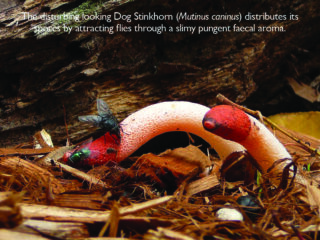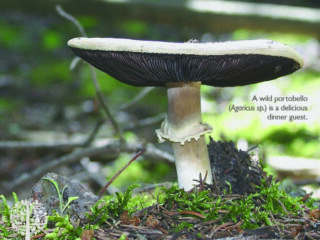The sudden appearance of a mushroom almost always elicits a response. One moment the mushrooms are there, and often, nearly as fast, they are gone. Like an unexpected visitor, an old friend you have not seen in years or just a dodgy-looking character standing at your door, the response is often surprise and suspicion.
When people are trying to identify mushrooms, they typically want to know what the species is and whether it is poisonous or edible. Often, they also want to know how to eradicate it from their properties. It is striking how intolerant humans can be at times. But when it comes to mushrooms, we should be very accepting. While sometimes they can be poisonous, like plants, mushrooms can range from gourmet delicacies to powerful medicines. They also do a world of good for the planet.
What Are Mushrooms?
Mushrooms are just the fruiting body or the reproductive stage of fungi. Fungi are not just ubiquitous; they are long-lived, near-immortal organisms that can grow as long as the habitat provides them sustenance. Many believe that fungi were some of the first terrestrial life on the planet when conditions were extreme. They quickly developed relationships with bacteria, algae, and plants to survive, creating living biomass where all these organisms could exist and eventually thrive.
Fungi are made up of living threads called hyphae, and once a network has been established, it becomes known as mycelium. This mycelium interacts with the plants, plant debris, bacteria, protozoa, insects, and woody debris to create what is now known as the soil food web. This is the living substrate from which life on this planet springs and thrives.

Mushrooms are Essential To Life
These fungi play many roles, including being saprophytes, breaking down and recycling the organic debris from the plant kingdom and the carcasses of the animal kingdom. Without fungi, we would be buried under piles of debris! This process is at the heart of what we are coming to know as mycoremediation. We try to harness this force to clean up our messes, no matter how nasty, including spills of gas, oil, diesel, fertiliser (chemical or natural), and glyphosate.
Fungi also create symbiotic relationships with plants, especially woody plants and trees. This is called mycorrhiza, translating from the Latin word for fungi “Myco” and the Latin word for roots “rhiza”. These fungi use a couple of different methods to interact with the roots of plants, exchanging water and a variety of nutrients and minerals for carbohydrates that the plants are adept at manufacturing. This pool of valuable resources is held in the fungal mycelium and is doled out at need throughout this interconnected network. The breath of fresh air plants provide is just a waste product of this process.
Fungi also play the critical role of a parasite, keeping the whole system in a dynamic balance. This fungal parasitism covers all aspects of life, including plants, animals, insects and other fungi.
At times, these three roles blend into a give-and-take relationship. This is the crucial part of what fungi do, and it generally goes unseen unless one takes the effort to observe.

Ultimate Conditions for Mushrooms
The mushroom is the reproductive organ in the fungal life cycle. Adequate amounts of water are essential for fungi to choose to produce mushrooms. Fungi are about 80-90% water, but more critically, they need moist ground for their spores to land and germinate. Temperature is also vital to prevent excess drying and promote condensation since both the spores and young hyphal growth are incredibly vulnerable. Fungi are not risk-takers; conditions have to be just perfect for them to expend the effort to produce the mushrooms.
However, all bets are off when the fungi’s habitat is threatened. Cut down a tree, build a road through the forest, or set a fire, and the fungi turn all their resources into fruiting mushrooms. Morels are especially famous for this, with many specific morel species evolving to rely only on that mechanism. Fire morels occur in conifer forests that have evolved in a rhythm of regular burn cycles.
Behind The Scenes
So when we see mushrooms popping up around our yards and in our gardens, we know that the fungi have been working away unseen, often for a long time. Some of these mushrooms show up almost every year, others once a decade or only once in our lifetimes. Yet, seen or unseen, the fungal mycelium is still on the job, cycling nutrients, supporting plant growth, and balancing bacteria, other microbes, and insects. The healthier this balance is, the healthier the habitat you are tending and creating.